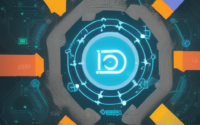Smart Farming: Agriculture Meets IoT
Smart Farming: Agriculture Meets IoT
Introduction to Smart Farming
Smart farming, also known as precision agriculture, is a revolutionary approach where advanced technologies such as Internet of Things (IoT), sensors, and data analytics are utilized to enhance agricultural practices. By integrating IoT devices with farming techniques, farmers can monitor and optimize various aspects of their operations, leading to increased efficiency, higher crop yields, and reduced environmental impact.
Benefits of Smart Farming
1. Improved Crop Monitoring:
Smart farming enables farmers to monitor their crops in real-time, thanks to IoT sensors installed in the fields. These sensors collect data on soil moisture, temperature, humidity, and nutrient levels, providing farmers with valuable insights into the health and growth of their crops.
2. Efficient Resource Management:
By analyzing the data collected by IoT devices, farmers can optimize the use of resources such as water, fertilizers, and pesticides. They can apply them precisely when and where needed, reducing waste and minimizing environmental impact.
3. Predictive Analytics:
Smart farming utilizes data analytics to predict crop diseases, pests, and other potential risks. Early detection enables farmers to take proactive measures, preventing crop losses and minimizing the need for chemical interventions.
4. Automation and Remote Control:
With IoT devices, farmers can automate repetitive tasks and control farm equipment remotely. For example, irrigation systems can be programmed to water the crops based on real-time moisture levels, and drones can be used for aerial monitoring and crop spraying.
5. Increased Crop Yields:
By leveraging the power of data and automation, smart farming helps optimize every stage of plant growth, leading to higher crop yields. This not only benefits the farmers but also contributes to global food security.
Implementing Smart Farming Solutions
1. Sensor Deployment:
To start implementing smart farming practices, farmers need to install IoT sensors in their fields. These sensors can measure soil moisture, temperature, humidity, pH levels, and other relevant parameters. The data collected by these sensors forms the foundation for data-driven decision-making.
2. Data Collection and Analysis:
The data collected by the IoT sensors is transmitted to a central system or cloud platform, where it is stored and analyzed. Farmers can use dedicated software or farm management platforms to monitor, visualize, and analyze the data.
3. Automation and Control Systems:
Once the data is analyzed, farmers can automate certain tasks such as irrigation, fertilization, and pest control. By connecting actuators to the IoT sensors, farmers can remotely control farm machinery and systems, optimizing resource utilization.
4. Integration with Other Technologies:
Smart farming can be further enhanced by integrating IoT with other emerging technologies. For instance, artificial intelligence (AI) can be used to analyze data patterns and make accurate predictions. Drones can provide aerial imagery for crop monitoring, and blockchain can enable secure and transparent supply chain management.
5. Continuous Monitoring and Evaluation:
Smart farming is an ongoing process that requires continuous monitoring and evaluation. Farmers should regularly assess the performance of their systems, make necessary adjustments, and stay updated with advancements in technology to maximize the benefits.
Challenges and Future of Smart Farming
While smart farming holds immense potential, there are a few challenges that need to be addressed. Firstly, the initial setup cost of implementing IoT devices and infrastructure can be a barrier for small-scale farmers. Secondly, ensuring data privacy and security is crucial when dealing with sensitive farming information. Additionally, there is a need for educating farmers and providing technical support to adopt and adapt to new technologies.
Despite these challenges, the future of smart farming looks promising. As technology continues to advance, new innovations such as autonomous robots, advanced data analytics, and predictive algorithms will further revolutionize the field. Smart farming will play a vital role in optimizing agricultural practices, reducing waste, and ensuring sustainable food production for a growing population.
Conclusion
Smart farming is revolutionizing the agriculture industry by leveraging the power of IoT and data analytics. By monitoring crops, optimizing resource utilization, and automating tasks, farmers can achieve higher crop yields, reduce environmental impact, and ensure food security. Although there are challenges to overcome, the future of smart farming is bright, and it will continue to shape the way we grow and produce food.

